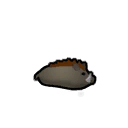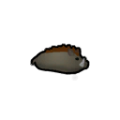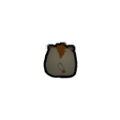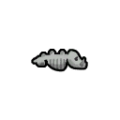Difference between revisions of "Wild boar"
(→Analysis: this isn't really comparing to pigs/etc other than "the number's smaller", so no need to say there's details (there really isnt)) |
|||
| (6 intermediate revisions by 3 users not shown) | |||
| Line 13: | Line 13: | ||
| filth rate = 16 | | filth rate = 16 | ||
| herdanimal = true | | herdanimal = true | ||
| + | | combatPower = 55 | ||
| bodysize = 0.85 | | bodysize = 0.85 | ||
| healthscale = 0.7 | | healthscale = 0.7 | ||
| Line 70: | Line 71: | ||
=== Nutrition === | === Nutrition === | ||
| − | When slaughtered, a boar yields {{#vardefineecho:baby_meat|{{Meat Leather Curve|{{#expr:{{P|Body Size}}*0.2*140}}}}}} meat and {{Meat Leather Curve|{{#expr:{{P|Body Size}}*0.2*40}}}} leather as a baby; {{Meat Leather Curve|{{#expr:{{P|Body Size}}*0.5*140}}}} meat and {{Meat Leather Curve|{{#expr:{{P|Body Size}}*0.5*40}}}} as a juvenile; or {{Meat Leather Curve|{{#expr:{{P|Body Size}}*140}}}} meat and {{Meat Leather Curve|{{#expr:{{P|Body Size}}*40}}}} leather as an adult. | + | When slaughtered, a boar yields {{#vardefineecho:baby_meat|{{Meat Leather Curve|{{#expr:{{P|Body Size}}*0.2*140}}}}}} meat and {{Meat Leather Curve|{{#expr:{{P|Body Size}}*0.2*40}}}} leather as a baby; {{Meat Leather Curve|{{#expr:{{P|Body Size}}*0.5*140}}}} meat and {{Meat Leather Curve|{{#expr:{{P|Body Size}}*0.5*40}}}} as a juvenile; or {{Meat Leather Curve|{{#expr:{{P|Body Size}}*140}}}} meat and {{Meat Leather Curve|{{#expr:{{P|Body Size}}*40}}}} leather as an adult. 1 meat is equal to 0.05 nutrition. |
An adult boar consumes {{P|Real Hunger Rate}} nutrition per day, and creates up to {{#expr: {{P|Average Offspring Per Birth}}/{{P|Gestation Period Days}} round 2}} offspring per day. | An adult boar consumes {{P|Real Hunger Rate}} nutrition per day, and creates up to {{#expr: {{P|Average Offspring Per Birth}}/{{P|Gestation Period Days}} round 2}} offspring per day. | ||
| Line 77: | Line 78: | ||
When considering a population of equal numbers of males and females, these nutrition efficiencies fall to {{%|{{Meat Production|{{PAGENAME}}|baby|1|1}}/{{Nutrition Consumption|{{PAGENAME}}|baby|1|1}} round 3}} for baby slaughter and {{%|{{Meat Production|{{PAGENAME}}|adult|1|1}}/{{Nutrition Consumption|{{PAGENAME}}|adult|1|1}} round 3}} for adult slaughter. | When considering a population of equal numbers of males and females, these nutrition efficiencies fall to {{%|{{Meat Production|{{PAGENAME}}|baby|1|1}}/{{Nutrition Consumption|{{PAGENAME}}|baby|1|1}} round 3}} for baby slaughter and {{%|{{Meat Production|{{PAGENAME}}|adult|1|1}}/{{Nutrition Consumption|{{PAGENAME}}|adult|1|1}} round 3}} for adult slaughter. | ||
| − | Boars are inferior to [[pig]]s, [[chinchilla]]s, [[ibex]], and [[horse]]s for meat / nutrition consumption. Pigs and horses take less slaughtering work, too. One of the few advantages of boars is that they are omnivorous, able to eat leftover human [[corpse]]s, but pigs are also omnivores | + | Boars are inferior to [[pig]]s, [[chinchilla]]s, [[ibex]], and [[horse]]s for meat / nutrition consumption. Pigs and horses take less slaughtering work, too. One of the few advantages of boars is that they are omnivorous, able to eat leftover human [[corpse]]s, but pigs are also omnivores. If pigs are unavailable, then boars are the best for this task. |
=== Combat === | === Combat === | ||
| − | Boars are surprisingly powerful for their size, though boars will rarely fight. They | + | Boars are surprisingly powerful for their size, though boars will rarely fight. They won't revenge when hunted. As pen animals, they will never be attacked by raiders. But when they ''do'' attack, such as in [[manhunter]] packs, boars are threatening. |
They have a damage output higher than that of a [[megaspider]], with a movement speed equivalent to that of an unarmored human. Boars tend to be able to put up a good fight against predators such as [[timber wolf|timber wolves]] and [[Warg]]s, often severely injuring, occasionally downing, or even outright killing them on rare occasions. | They have a damage output higher than that of a [[megaspider]], with a movement speed equivalent to that of an unarmored human. Boars tend to be able to put up a good fight against predators such as [[timber wolf|timber wolves]] and [[Warg]]s, often severely injuring, occasionally downing, or even outright killing them on rare occasions. | ||
| Line 88: | Line 89: | ||
== Health == | == Health == | ||
| − | {{Animal Health Table}} | + | {{Animal Health Table|QuadrupedAnimalWithHoovesAndTusks}} |
| + | |||
| + | == Gallery == | ||
| + | <gallery> | ||
| + | Wildboar east.png|Wild boar facing east | ||
| + | Wildboar north.png|Wild boar facing north | ||
| + | Wildboar south.png|Wild boar facing south | ||
| + | Dessicated wildboar east.png|Wild boar decaying | ||
| + | </gallery> | ||
== Version history == | == Version history == | ||
Latest revision as of 00:44, 16 July 2024
Wild boar
This hairy omnivore is descended from escaped pigs and evolved for living in the wild.
Its tusks make it a better fighter than its domesticated pig cousins. Unfortunately, it is too unruly to be trained in the most complex tasks.
Base Stats
- Type
- Animal
- Flammability
- 70%
Pawn Stats
- Combat Power
- 55
- Move Speed
- 4.6 c/s
- Health Scale
- 70% HP
- Body Size
- 0.85
- Mass - Baby
- 10.2 kg
- Mass - Juvenile
- 25.5 kg
- Mass - Adult
- 51 kg
- Carrying Capacity
- 64 kg
- Filth Rate
- 16
- Hunger Rate
- 0.48 Nutrition/Day
- Diet
- omnivorous grazer
- Life Expectancy
- 12 years
- Manhunter Chance
- 0%
- Manhunter Chance (Taming)
- 0%
- Trainable Intelligence
- None
- Wildness
- 50%
- Minimum Handling Skill
- 4
- Roam Interval
- 2 days
- Mate Interval
- 12 hours
- Maturity Age
- 0.333 years (20 days)
- Juvenile Age
- 0.1 years (6 days)
- Comfortable Temp Range
- -23 °C – 40 °C (-9.4 °F – 104 °F)
Production
- Meat Yield
- 119
 pork
pork - Leather Yield
- 36
 pigskin
pigskin - Gestation Period
- 5.661 days
- Offspring Per Birth
- 1-2 (1.25 avg)
Melee Combat
- Attack 1
- Tusk
9.7 dmg (Scratch)
15 % AP
2 second cooldown - Attack 2
- Tusk
9.7 dmg (Stab)
15 % AP
2 second cooldown - Attack 3
- Teeth
8.5 dmg (Bite)
13 % AP
2 second cooldown
0.6 chance factor - Attack 4
- Head
5 dmg (Blunt)
7 % AP
2 second cooldown
0.2 chance factor - Average DPS
- 2.55
- tradeTags
- AnimalCommon
Boars are omnivorous wild pigs. They are quite pervasive, being found in temperate forests, temperate swamps, tropical rainforests, tropical swamps, boreal forests, and cold bogs. If slain, they can be butchered for 119 pork and 36 pigskin.
Summary[edit]
Wild boars are pen animals. Once tamed, pen animals cannot and do not need to be trained any further. But if left outside of a pen or caravan hitching spot, pen animals will eventually roam outside your colony. Making a caravan is not required to tie animals to a caravan hitching spot.
Wild boars can appear in raids alongside yttakin pirates. ![]() Note that "raider" boars are still unable to travel through fences and barricades. This can alter their pathing. If the animal raider cannot reach a better target because of fences/walls, it will start bashing at structures randomly.
Note that "raider" boars are still unable to travel through fences and barricades. This can alter their pathing. If the animal raider cannot reach a better target because of fences/walls, it will start bashing at structures randomly.
Analysis[edit]
Boars are one of many animals that exist primarily to be hunted.
As tamed animals, boars are worse for meat/leather than pigs. While boars can be found in the wild, they are generally outclassed for meat by at least 1 animal, regardless of what biome you've settled on.
Nutrition[edit]
When slaughtered, a boar yields 28 meat and 15 leather as a baby; 60 meat and 23 as a juvenile; or 119 meat and 36 leather as an adult. 1 meat is equal to 0.05 nutrition.
An adult boar consumes 0.48 nutrition per day, and creates up to 0.22 offspring per day.
- When offspring are slaughtered as babies, a female boar will produce 0.31 nutrition of meat per day, giving a nutrition efficiency of 64.4%.
- If the offspring are allowed to grow to adulthood, they will consume an additional 1.37 nutrition per day, but will instead yield 1.31 nutrition per day as they are slaughtered, resulting in a nutrition efficiency of 71.1%.
When considering a population of equal numbers of males and females, these nutrition efficiencies fall to 32.2% for baby slaughter and 56.5% for adult slaughter.
Boars are inferior to pigs, chinchillas, ibex, and horses for meat / nutrition consumption. Pigs and horses take less slaughtering work, too. One of the few advantages of boars is that they are omnivorous, able to eat leftover human corpses, but pigs are also omnivores. If pigs are unavailable, then boars are the best for this task.
Combat[edit]
Boars are surprisingly powerful for their size, though boars will rarely fight. They won't revenge when hunted. As pen animals, they will never be attacked by raiders. But when they do attack, such as in manhunter packs, boars are threatening.
They have a damage output higher than that of a megaspider, with a movement speed equivalent to that of an unarmored human. Boars tend to be able to put up a good fight against predators such as timber wolves and Wargs, often severely injuring, occasionally downing, or even outright killing them on rare occasions.
Training[edit]
This animal can be trained as follows:
| Guard: | |
|---|---|
| Attack: | |
| Rescue: | |
| Haul: | |
*As of version 1.1.2610, all animals can be tamed. The percentage of likelihood of success depends on factors such as the Animals Wildness Percentage, Pawn Handling Skill, and others. More information can be found on the animals page.
Health[edit]
| Part Name | Health | Quantity | Coverage[1] | Target Chance[2] | Subpart of | Internal | Capacity[3] | Effect if Destroyed/Removed |
|---|---|---|---|---|---|---|---|---|
| Body | 28 | 1 | 100% | 24% | N/A[4] | - | Death | |
| Spine | 17.5 | 1 | 3% | 3% | Body | Moving |
−100% Moving[5] | |
| Stomach | 14 | 1 | 3% | 3% | Body | Digestion |
−50% Digestion | |
| Heart | 10.5 | 1 | 3% | 3% | Body | Blood Pumping |
Death | |
| Lung | 10.5 | 2 | 3% | 3% | Body | Breathing |
−50% Breathing. Death if both lost | |
| Kidney | 10.5 | 2 | 3% | 3% | Body | Blood Filtration | −50% Blood Filtration. Death if both lost | |
| Liver | 14 | 1 | 3% | 3% | Body | Digestion |
Death | |
| Neck | 17.5 | 1 | 26% | 5.2% | Body | Eating Talking Breathing |
Death | |
| Head | 17.5 | 1 | 80% | 2.912% | Neck | - | Death | |
| Skull | 17.5 | 1 | 20% | 1.248% | Head | - | Cannot be destroyed Increasing Pain based on damage. | |
| Brain | 7 | 1 | 70% | 2.912% | Skull | Consciousness |
Death Damage always results in scarring. | |
| Eye | 7 | 2 | 9% | 1.872% | Head | Sight |
−25% Sight. −100% if both lost. Damage always results in scarring. 0% Hit Chance against Blunt damage. | |
| Ear | 8.4 | 2 | 6% | 1.248% | Head | Hearing |
−25% Hearing. −100% if both lost. | |
| Nose | 7 | 1 | 6% | 1.248% | Head | - | - | |
| AnimalJaw | 7 | 1 | 30% | 1.248% | Head | Manipulation |
−100% Manipulation. Can no longer use Bite attack nor Tusk attack. | |
| Tusk | 14 | 2 | 40% | 2.496% | AnimalJaw | - | Can no longer use Tusk Attack.[6] | |
| Front Leg | 21 | 2 | 6.5% | 5.525% | Body | Moving |
−25% Moving. −50% if both lost.[7] | |
| Front Hoof | 7 | 2 | 15% | 0.975% | Front Leg | Moving |
−25% Moving. −50% if both lost. | |
| Rear Leg | 21 | 2 | 6.5% | 5.525% | Body | Moving |
−25% Moving. −50% if both lost. | |
| Rear Hoof | 7 | 2 | 15% | 0.975% | Rear Leg | Moving |
−25% Moving. −50% if both lost. |
- ↑ Coverage determines the chance to hit this body part. It refers to the percentage of the super-part that this part covers, before its own sub-parts claim their own percentage. For example, if the base coverage of the super-part is 100%, and the coverage of the part is 20%, 20% of hits would hit the part, and 80% the super-part. If the part had its own sub-part with 50% coverage, the chances would be 10% sub-part, 10% part, 80% super part.
- ↑ Target Chance is the actual chance for each part to be be selected as the target when each part's coverage has been taken into account(I.E. Neck covers 7.5% of Torso but Head covers 80% of Neck so it actually has only a 1.5% chance to be selected). This is not pure hit chance, as different damage types propagate damage in different ways. See that page for details.
- ↑ Note that capacities can affect other capacities in turn. Only the primary effect is listed. See specific pages for details.
- ↑ This is the part that everything else connects to to be considered 'connected'.
- ↑ If Moving drops below 16% a pawn cannot move.
- ↑ A Scratch/Stab attack. The power and cooldown vary between animals with this body.
- ↑ While there is an associated group, it remains unused. The front/rear format was retained for consistency between Quadruped Animal's Health Templates.
Gallery[edit]
Version history[edit]
- 0.7.581 - Added
- Beta 19 - trainable intelligence Advanced -> Intermediate, tusk damage 9 -> 8, speed 5 -> 4.2, min comfy temperature -20 -> -15
- 1.3.3066 - Trainability changed from intermediate to none, boars now are predominantly a pen animal. Removed manhunter chances.




